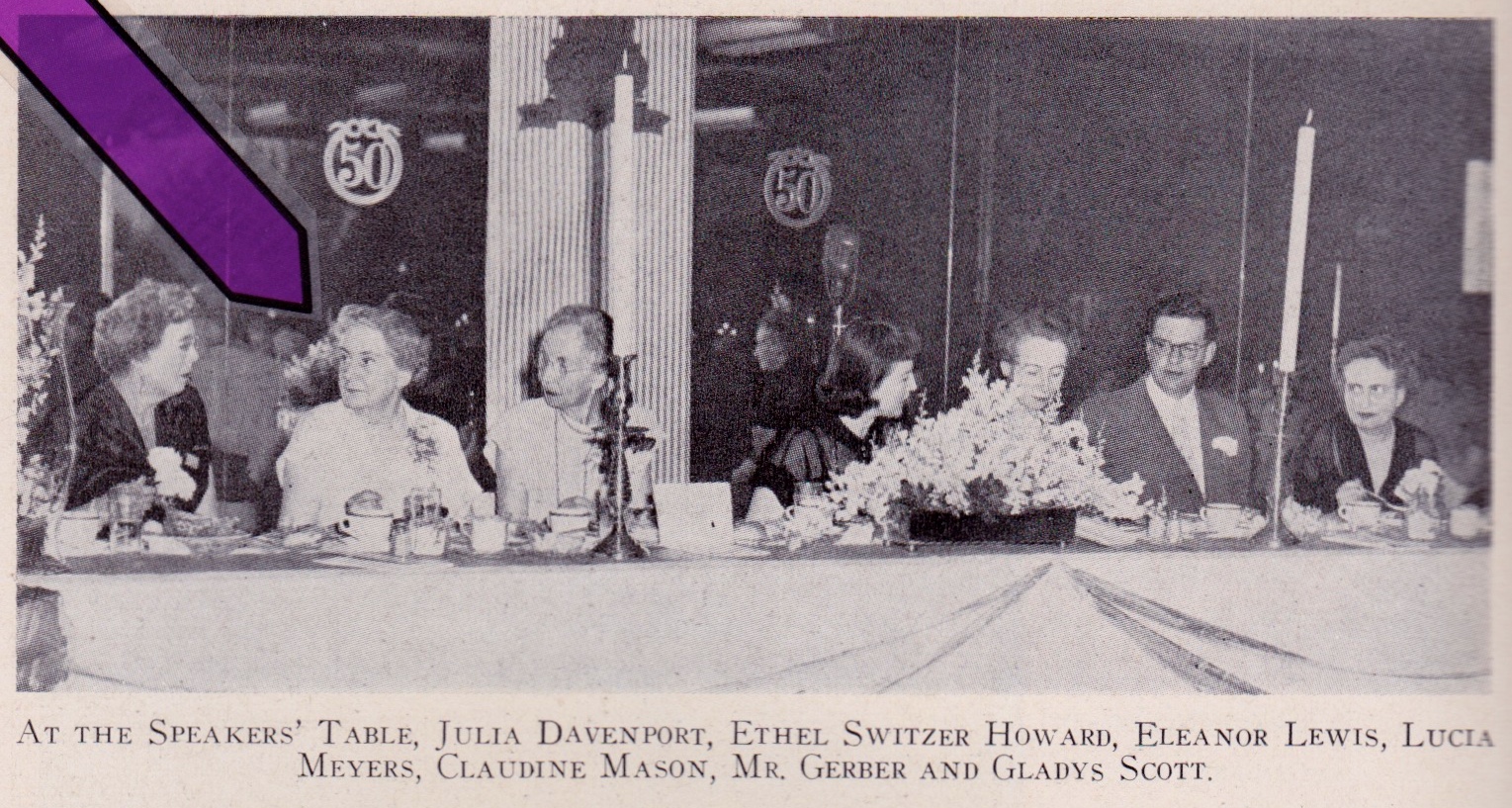What’s your favorite line of The Symphony?
This very question has spanned generations of Chi Omegas.
While Sisters may forget portions of our Ritual, stumble over our oath, or even misplace their badge over the years, each and every Chi Omega keeps The Symphony, and her favorite line, “ever at heart” long after graduation.
In fact, most Chi Omegas think of The Symphony as one of the most defining representations of our Sisterhood. However, what we don’t often acknowledge is the steadfast loyalty that author Ethel Switzer Howard had to Chi Omega throughout her entire life.
Ethel, originally from California, studied English while at Northwestern University and joined the Xi Chapter of Chi Omega as a new member in 1904, eager for opportunity during her sophomore year. Her benevolent ways and commitment to investing in Chi Omega were showcased before The Symphony was even published, when she and her chapter decided to forgo individual gifts to each other for Christmas. Instead, they gifted the chapter room with new décor including pillows, pictures, and a white tablecloth with carnation designs.

Ethel wrote the timeless Symphony prior to her initiation, and it was shared with all Chi Omega Sisters when published in the February issue of The Eleusis in 1905. Prefaced by her health issues, Ethel was unable to return to school the fall of her junior year, but later returned and reappeared as the author of Eleusis submissions for Xi Chapter in 1906 and 1907. She also served as G.M. for the chapter, despite battling the lasting effects of polio –a living testament to the Symphonic ideal of being “discouraged never.”
After graduating from Northwestern in 1907 she went on to start the Pittsburgh (PA) Alumnae Chapter in 1921, later serving as its first President. In fact, throughout her adult life Ethel was an ardently involved member of her community, serving in many considerable roles. She advised collegiate chapters at the University of Pittsburgh and Carnegie Mellon, continuing to share her love for Chi Omega. She was chair and editor of Pittsburgh Writers’ Group of Bookfellows Literary Guild, one of the Founders and the First President of the Pittsburgh Branch of the Dickens Fellowship, a member of the executive board of the National Better Magazines Council, and very active in her church. In the midst of all these accomplishments she married her Sigma Alpha Epsilon husband, Mr. John Gardner Howard, on April 27, 1912 and had two children, a son and a daughter. In 1951 Ethel reconnected with Xi Chapter while attending the chapter’s 50th anniversary where she had the honor of sitting at the speakers’ table.
Although countless poems were submitted to The Eleusis and published, Ethel’s became a pinnacle in the life of Chi Omegas everywhere. The quality of The Symphony and the universal resonance of the piece made it one that withstood the test of time. Ethel patterned our Symphony after a poem written by William Channing, a Unitarian minister, which was penned years earlier. Ethel credited Mr. Channing for her use of his work as a guide to writing what was originally called “A Fraternity Girl’s Symphony.”
Because The Symphony rang true to so many sorority women the words were used by several other organizations. Even after the name of the poem was eventually changed to The Chi Omega Symphony, other groups identified with and referenced it for years.
Besides the title, there has been one small edit made to our Symphony since its inception. In the original printing, the word “there” was not found in the last sentence, “…In which is no discordant note.” It is undetermined when the word was added but, as we know, the last line now reads, “…In which there is no discordant note.” Ah, the irony of finding a “discordant note” in that very sentence!

After the death of her husband, Ethel lived in Little Rock, Arkansas, with her son where she continued to attend Chi Omega functions, even as her health began to decline, until she entered the Omega Chapter in July 1966 at the age of 81. As would be most fitting, the minister read The Chi Omega Symphony during her funeral services to commemorate her life as a Chi Omega and as a woman of purpose. Her badge is in our Archives at the Executive Headquarters and serves as a reminder of the gratitude we owe to Sister Howard for beautifully illuminating our path in Chi Omega.
As we begin to share the many stories that weave the tapestry of our Sisterhood together over 125 years, we are particularly thankful for Ethel and her lifetime commitment “to our Fraternity and its highest teachings.”
How does The Symphony continue to inspire you?
